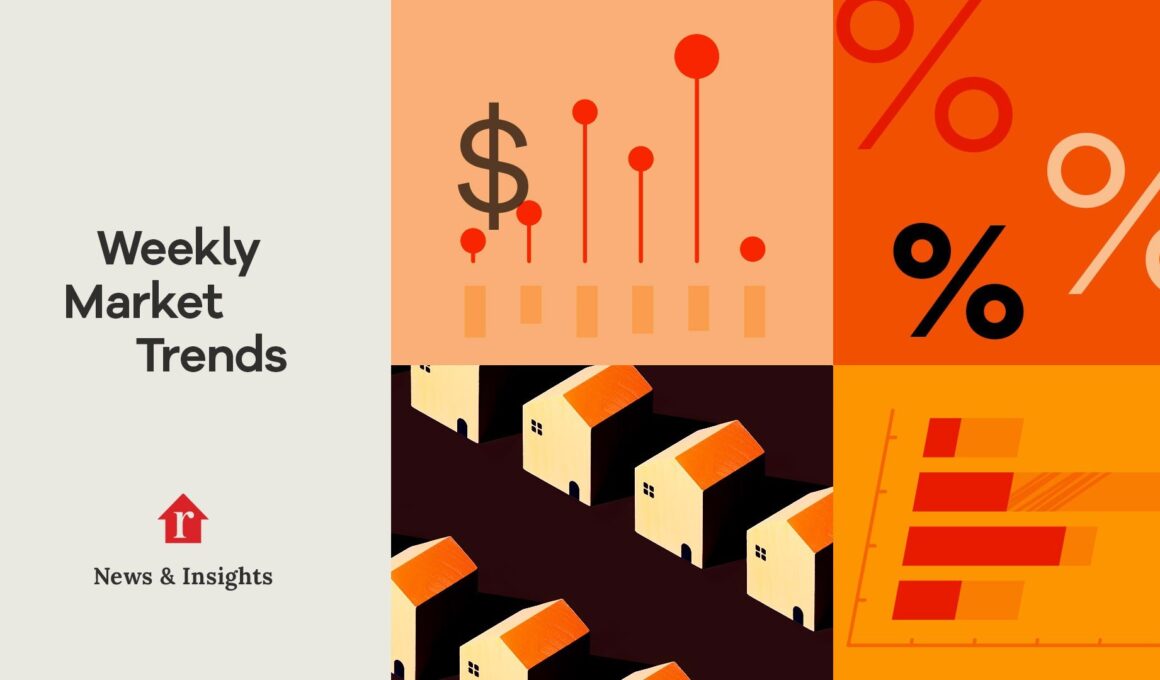Mortgage rates inched up—just barely—this week, with the average rate for a 30-year fixed home loan going from 6.77% last week to 6.78% for the week ending July 25, according to Freddie Mac.
“Mortgage rates essentially remained flat from last week but have decreased nearly half a percent from their peak earlier this year,” Sam Khater, Freddie Mac’s chief economist, said in a statement. “Despite these lower rates, buyers continue to pause, as reflected in tumbling new and existing home sales data.”
That’s because the magic mortgage rate number hasn’t moved downward enough to revive a sluggish housing market.
“Not only do elevated mortgage rates eat into homebuyer demand by holding back their buying power, we also see an impact on inventory as higher rates have tended to keep more sellers on the sidelines,” says Realtor.com® Chief Economist Danielle Hale.
But relief might soon be on the way for potential buyers.
“With the hope that the economy keeps moving toward the right direction, we expect the falling mortgage rates to help lower borrowing costs and the rising inventory to gradually push prices down,” Realtor.com economist Jiayi Xu says in her latest analysis.
Here’s a snapshot of the latest housing market data and what it means for homebuyers and sellers in our latest installment of “ How’s the Housing Market This Week?”
The current real estate climate
The summer market hasn’t seen as much heat this year as it typically has in the past.
“With home prices continuing to hover at or near record highs, mortgage rate swings have an outsized impact on affordability and transaction activity,” says Hale.
Case in point: Both new home sales and existing home sales dipped in June.
But luckily, there have been some buyer-friendly signals recently.
Most notably, the market-estimated odds of the Federal Reserve implementing at least a one-quarter-point rate cut by September are a whopping 96%, according to Hale. (While the Fed doesn’t set mortgage rates, the two numbers often move in the same direction.)
Yet nothing in the current housing market seems to be a sure thing.
“The upcoming Presidential election continues to deliver surprising twists,” Hale adds. Those unforeseen developments, in turn, may impact the economy.
Home prices are flat
While mortgage rates constantly change, the median list price remained the same compared with the previous year for the week ending July 20. (In June, the median home cost $445,000.)
The barely there rise marked 26 consecutive weeks of price growth below 1%.
Even though prices aren’t technically going up, the increasing prices per square foot continue to pose affordability challenges, according to Xu—especially for first-time buyers.
“Similar-sized homes remain more expensive than they were a year ago,” Xu explains. “Fortunately, smaller and more affordable homes are coming to market, especially in the South.”
The number of homes for sale increased
Housing stock was up for the week ending July 20, with fresh listings rising by 6.4% compared with the year prior. This marks 15 out of the past 16 weeks with new listings growth.
Overall, the total number of homes for sale (including newly listed and those that have lingered on the market) jumped 36.9% above year-ago levels, continuing a now 37-week streak of increases.
While the trend in increasing home stock is welcomed, Xu notes that the number of new homes for sale is actually historically low.
“Despite nearly eight months of building inventory, buyers still see more than 30% fewer homes for sale compared with pre-pandemic,” Xu explains.
The pace of the market slows
The typical home for sale spent four more days on the market during the week ending July 20 compared to the same period last year.
While the market moved one day faster than the previous two weeks, four days is the second longest additional time on the market since last August.
“A longer time on the market means buyers feel less urgency and won’t have to move as quickly as last year,” Xu says.
Sellers also seem to be more patient as they wait for a buyer to make an offer. The share of for-sale homes that were delisted declined to 5.7% at the end of the first half of 2024, from 5.2% in June 2023.
“That should help nudge the balance of supply and demand slightly toward buyers, and set up the possibility of more home sales activity this fall as mortgage rates ease,” Hale explains.








